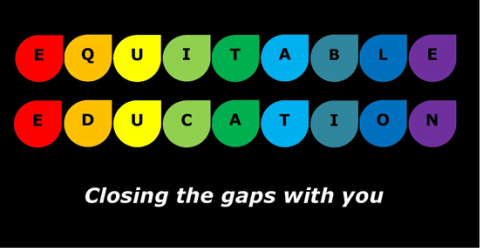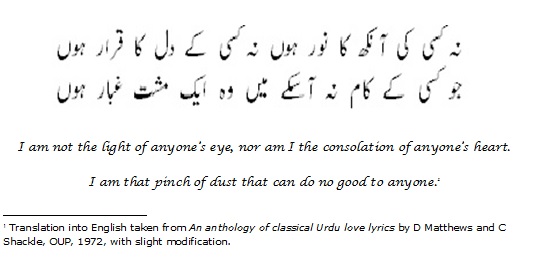Article published in Race Equality Teaching vol 23 no 2
[i] A ghazal is a short love poem in which the two halves of the first couplet and the second line of the remaining couplets rhyme.
The recent reforms in education in England with their emphasis on changing structures, supposedly granting greater autonomy for individual schools but in essence ensuring greater control from the centre, high accountability stakes and funding reforms, especially in relation to the ethnic minority achievement grant (EMAG), have meant that raising the attainment of minority pupils has been largely left to the forces of the emerging ‘self-improving’ school system. This contrasts with the strong steer coming from the centre to focus on the under-attainment of pupils from low-income households, as measured by eligibility for free school meals and therefore for the pupil premium grant (PPG). The steer on low-income households, although much needed, has largely been one-dimensional, focusing primarily on the underperformance of White British pupils. In consequence a valuable opportunity has been a missed: an opportunity to look at intersectionality as a lever for raising standards of performance across a range of groups of pupils who are currently failing to achieve the level of national age-related expectations. The pupil premium grant (PPG) is concerned with reducing a form of inequality, and is a welcome move in the right direction. But using this resource to target the needs of pupils who are from minority ethnic backgrounds has been noticeably absent, even though such pupils are disproportionately affected by low household income[i] and even though their number is constantly increasing. [ii]
Intersectionality is a term originally coined by Kimberlé Crenshaw in the United States. It highlights the necessity to understand the complex and multiple ways in which various systems of inequality can come together at the same time.[iii] As David Gillborn and Nicola Rollock pointed out in their 2011 paper for the British Educational Research Association, ‘adopting an intersectional framework allows for the exploration of differences within and between groups that take account of issues such as historical and socio-political context while still maintaining awareness of racial inequalities’.[iv] The same point has been powerfully made by Bhopal and Preston (2012)[v] and by Brah and Phoenix (2004).[vi]
Current patterns of attainment
It is hard to comprehend nowadays that it was only early this century that educational data started to be disaggregated by ethnicity so that the performance of students of different minority groups became known. As early as 2000, in their seminal report for Ofsted entitled Educational inequality, mapping class race and gender, David Gillborn and Heidi Safia Mirza showed that, while social class is the most powerful determinant of educational outcomes, a key role is played also by ethnicity and, though to a lesser extent, by gender. Despite this and other research findings, binary and linear approaches to addressing educational outcomes still prevail, with a particular focus presently just on aspects of social class.
In consequence, very little information is currently available in the public domain which shows how intersectionality operates in schools. However, data in Table 1 is of preliminary relevance and interest. It is based on information shared at a DfE roundtable meeting in March 2013 and looks at pupils who did not attain the levels expected nationally at Key Stage 2 and Key Stage 4. Unfortunately, it focuses only on the three factors of low income, English as an additional language (EAL), and special educational needs: it does not show how ethnicity and gender interplay, since the DfE could not provide this information. It shows that at the end of Key Stage 2 in 2012 four fifths (81 per cent) of pupils who did not achieve expected levels had one or more of the following characteristics: special educational needs, from a low-income household, English as additional language. By far the most significant of these characteristics was special educational needs. Only six per cent were affected by low income alone.
[i] FSM eligibility White British – 15.8%, ethic minority origin: 24.4%, overall 18.8%, Traveller Irish Heritage 65.8 %, Gypsy Traveller 42.9%, Pakistani 24.4%, Bangladeshi 32.8%,Caribbean 33.1%, and African 38.1%). Source DfE 2013.
[ii] The 2013 school census figures show that 28.5% of pupils in primary and 24.2 % in secondary are from ethnic minority backgrounds. The percentages for English as an additional language pupils are slightly lower, at 18.1% in Primary and 13.6% in Secondary.
[iii] Crenshaw, K. (1989) Demarginalising the intersection of race and sex: A Black feminist critique of antidiscrimination doctrine, feminist theory and antiracist politics. University of Chicago Legal Forum, pp. 139-168.
[iv] Rollock, N. and Gillborn, D. (2011) Critical Race Theory (CRT), British Educational Research Association online resource
[v] Bhopal, K. and Preston, J. (2012) Intersectionality and Race in Education. London: Routledge.
[vi] Brah, A. and Phoenix, A. (2004) Ain’t I a Woman? Revisiting Intersectionality, Journal of International Women’s Studies. 5(3): 75-86.


 RSS Feed
RSS Feed
